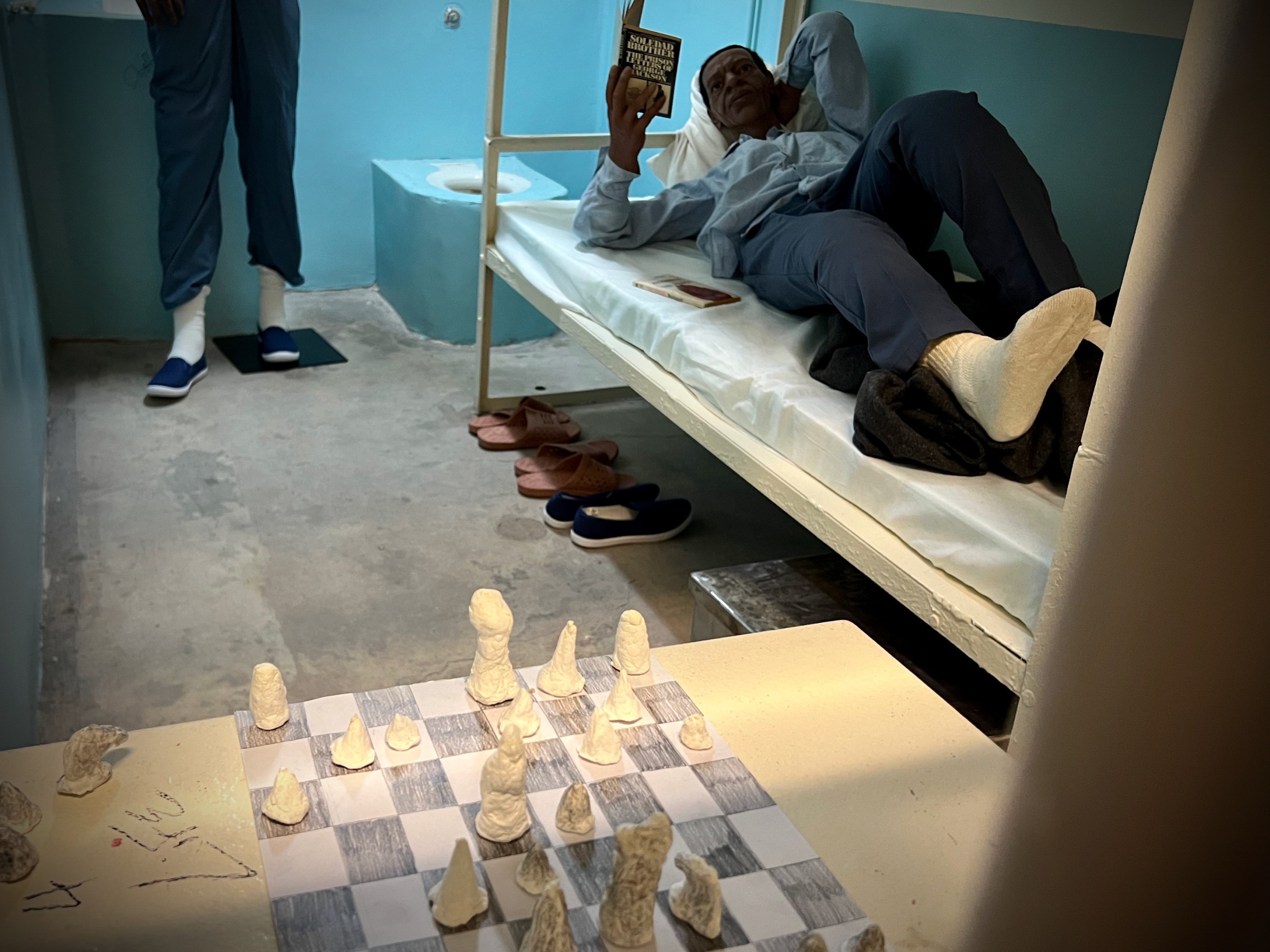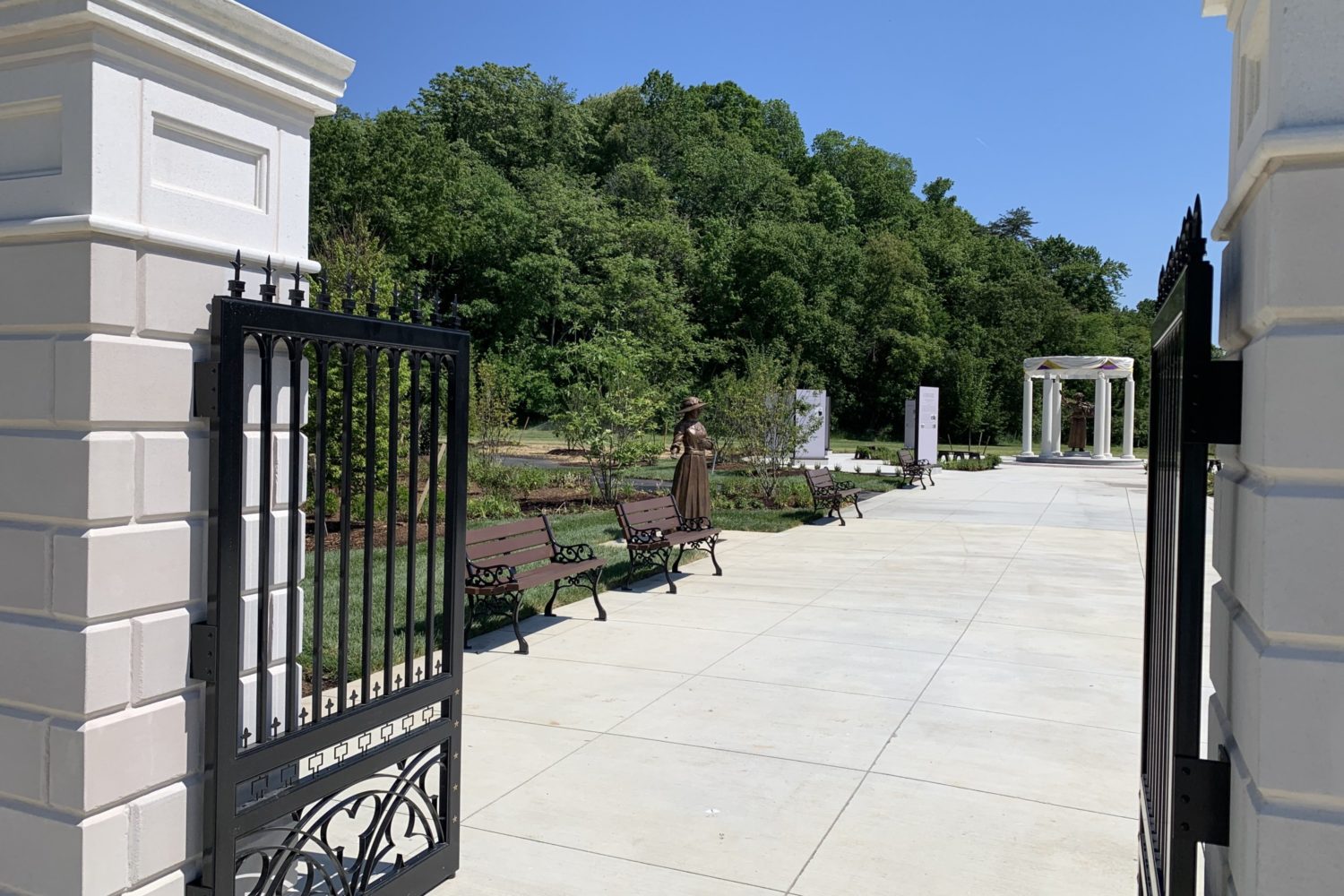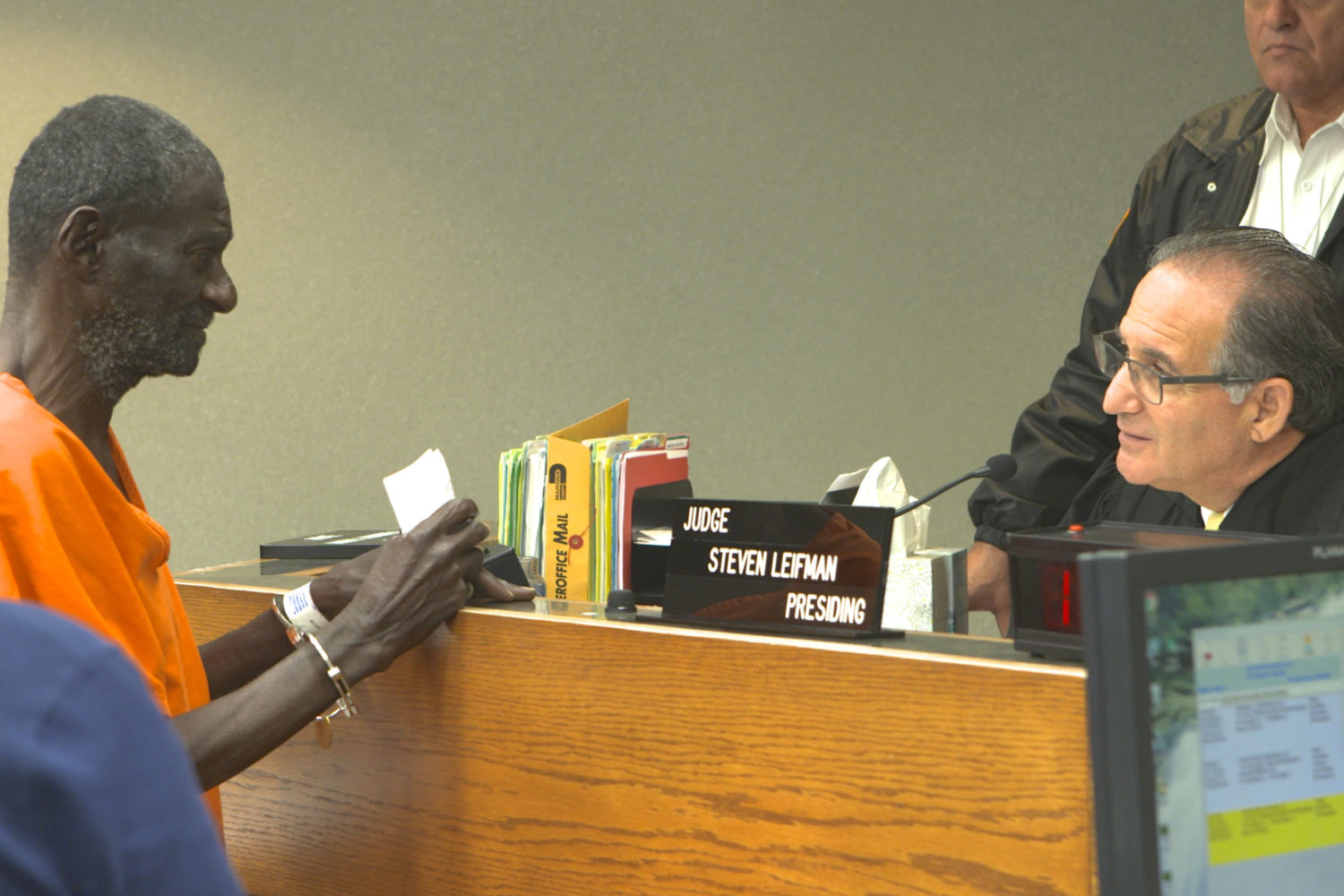There’s a lovely arts center and a nice theater in the old Occoquan Workhouse. Some of the Lorton Reformatory’s old dormitories have been turned into swanky apartments. Nearby, a Lidl occupies part of the prison’s old maximum security unit. And yet despite all this new life, absent the thousands of prisoners who departed by the time the District of Columbia’s old prison complex in Lorton, Virginia, closed in 2001, there’s still a feeling of emptiness that’s hard to shake when you visit the site.
That’s why visitors are likely to be startled when they encounter “Counting the Days,” a new permanent installation in the Workhouse’s Q-block, better known as the Hole. Two reasonably realistic mannequins occupy one of the otherwise empty cells just behind the exhibit spaces of the Workhouse’s Lucy Burns Museum. One lies on a bed reading Soledad Brother: The Prison Letters of George Jackson. The other, wearing a blue jumpsuit and slip-on sneakers, flings a thousand-yard stare at passersby. Graffiti pays homage to DC neighborhoods and once-notorious drug gangs like the First and Kennedy Street Crew. A chess set made from toilet paper occupies a small metal table and seat pressed up next to the cell’s bars.

The filmmaker Karim Mowatt co-curated the exhibition with museum staff. The details in the cell are informed by Mowatt’s own experiences as a returned citizen: Not only did he spend a considerable hunk of the ’90s incarcerated at Lorton on drug charges, he actually occupied this exact cell in the Hole for six months in 1995. This side of the cellblock, he says, was typically occupied by people on administrative segregation due to disciplinary infractions—he was in for fighting—or were awaiting transfer to another unit, like the maximum security facility where a Ledo Pizza and a Taco Rock are now perched.
Mowatt’s lived memories are invaluable, says Katie Crooks, the director of museum and visitor experiences at the Workhouse Arts Center, because, she says, whether due to the haste with which the facility closed down or neglect over the years, the records of everyday life at Lorton are “a mess.” The few photographs the museum has of these cells are so dark it’s hard to learn much from them. Crooks tapped Mowatt for the exhibit, which was funded in part by ArtsFairfax, after he hosted two sold-out screenings of his documentary Lorton: Prison of Terror at the Workhouse center.
The installation appears spare at first. Linger, and you’ll begin to notice the many fine details Mowatt worked in, like the shower shoes under the bunkbed, a manila envelope like the ones people would store their legal papers in, the hashmarks on the wall that keep track of how many pushups and dips the residents accomplished. “I tried to capture what most people would be thinking at the time,” he says, explaining pencil-drawn artwork that shows someone escaping, another graffito that expresses distaste for a judge, yet another piece that…let’s say discourages snitching. A few finishing touches are yet to arrive before the exhibit opens this weekend: cards that display each man’s prison number (the older man will have a lower one), perhaps a do-rag for the younger man, and audio clips for the exhibit that Mowatt recorded about the dreary lives of people inside: “Every day someone was assaulted,” he intones. “Every week someone was stabbed. Every month, someone was killed.”

The cellblock was redone after Lorton closed. The air conditioning you feel was a distant fantasy for prisoners back in the day, who got puny relief from the brutal Virginia summers from open windows or a fan at one end of the corridor. Inmates were supposed to get an hour outside the cells every day; instead they’d receive a 15-minute cold shower every three days and a once-weekly opportunity to “exercise” by walking up and down the hallway in front of the cells for 30 minutes. Crooks had a new fluorescent light fixture installed in the exhibit after Mowatt pointed out that the caged light fixtures that went up after the renovation would be too easy to turn into weapons.
Despite the terrible conditions, Mowatt says it wasn’t that difficult for him to revisit the cell. “I think it never really leaves you,” he says of his time in Lorton. “I spent so much time in those places that it became a part of me.”
“Counting the Days” opens Saturday, June 1, at 5 PM at the Lucy Burns Museum at the Workhouse Arts Center in Lorton, Virginia. A Q&A with Mowatt and his former cellmate Lamar Muskelly and a reception will follow. Free. At other times, museum admission is free, with cellblock tours costing $5 a person. More information about the opening reception can be found here.


















